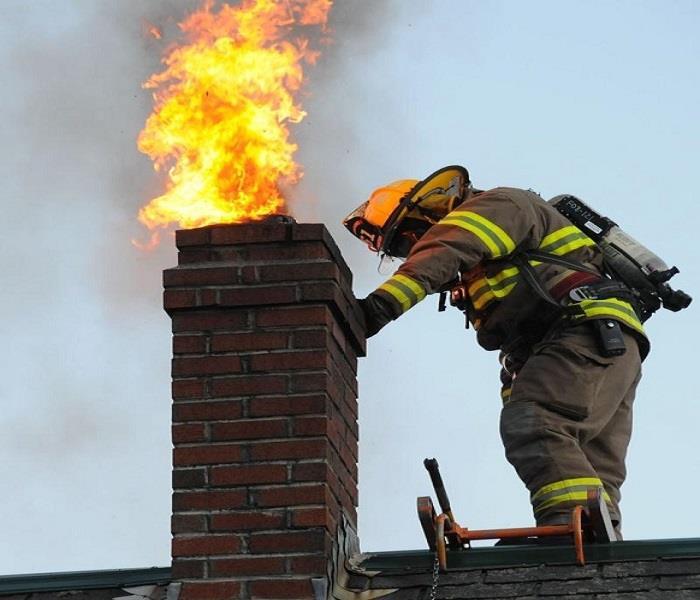Chimney/Fireplaces Maintenance
12/11/2015 (Permalink)
With natural gas and propane prices continuing to rise, you'll likely be looking to the old fireplace this winter to help cut your home-heating bills. But before you spark up the logs, take heed that fireplaces and chimneys are involved in 42 percent of all home-heating fires. So first make sure yours is up to snuff by following the seven safety tips below.
1. Hire a chimney sweep. The National Fire Protection Association recommends that chimneys be swept at least once a year at the beginning of the winter to remove soot and debris. Find a certified sweep in your area via the Chimney Safety Institute of America.
2. Check for damage. In addition to cleaning, a chimney sweep should inspect the chimney structure for cracks, loose bricks, or missing mortar. Chimney liners should also be checked for cracking or deterioration.
3. Cap the chimney. A cap fitted with wire-mesh sides covers the top of the chimney and keeps rain, birds, squirrels, and debris from entering. Replace or repair a cap that's missing or damaged.
4. Burn seasoned hardwoods. Choose dense wood, such as oak, that's been split and stored in a high and dry place for at least six months. Green wood and resinous softwoods like pine produce more creosote, a flammable by-product of combustion that can build up in the chimney.
5. Don't overload. Small fires generate less smoke, thus less creosote buildup. Also, a fire that's too large or too hot can crack the chimney.
6. Build it right. Place logs at the rear of the fireplace on a metal grate. Use kindling, rather than flammable liquids, to start the fire.
7. Use a spark guard. Prevent errant embers from shooting out of the firebox with a mesh metal screen or glass fireplace doors. A guard in front of an open flame is especially important when the room is unoccupied.





 24/7 Emergency Service
24/7 Emergency Service
